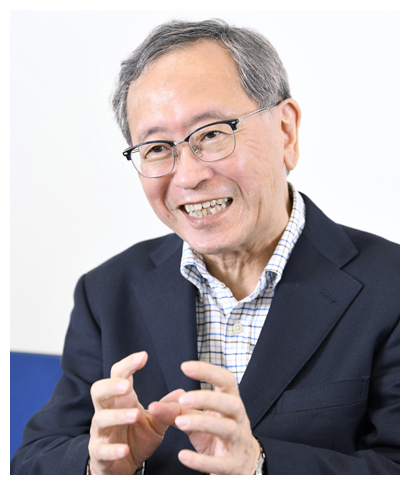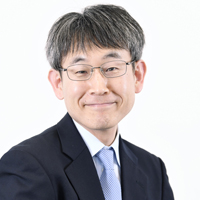To leverage RIKEN's comprehensive capabilities and to conduct more effective management with a stronger strategic focus, a new system was introduced in fiscal year 2025. It consists of five research domains-Pioneering Science; Mathematical, Computational and Information Science; Life Science; Sustainable Science; and Physical Science. Each research domain is led by an Executive Director of Science, an internationally outstanding scientist who possesses extremely high expertise both academically and in research management. These Executive Directors of Science encourage cross-disciplinary collaboration based on advanced specialized knowledge, accelerating the creation of new knowledge. Supporting research promotion alongside the five Executive Directors of Science are the Promotion Division Directors.
We asked about the goals of each domain from both researchers' and administrative departments' perspectives.
- Physical Science Domain
- This domain aims to bring together diverse researchers and further develop information processing technology and highly efficient energy conversion technology through cross-disciplinary research and discussion, with the goal of solving social issues such as the realization of Society 5.0 and creating new academic disciplines.

Yoshinori Tokura
Executive Director of Science, Physical Science Domain
When people hear the term "physical sciences," they tend to think of physics alone. However, the physical sciences encompass a much broader academic field, which includes not just physics, but also chemistry, engineering, and other disciplines outside of the life sciences.
Our domain of physical sciences consists of four distinctive research centers, each with a unique character.
The RIKEN Center for Emergent Matter Science (CEMS), where I served as the inaugural director, is dedicated to exploring the properties of matter and creating new materials and functions. Since its inception, we have built a system that enables world-class achievements through collaboration.
The RIKEN Center for Advanced Photonics (RAP) produces groundbreaking research that leads the world, including astonishing innovations such as the optical lattice clock and attosecond lasers.
The RIKEN Nishina Center for Accelerator-Based Science (RNC) is centered around the RI Beam Factory, a massive accelerator facility. The entire center works together as one to lead the global field of nuclear physics.
The RIKEN SPring-8 Center (RSC) is one of the world's largest synchrotron radiation facilities, providing collaborative research opportunities to scientists from a wide range of fields both in Japan and internationally.
Our goal is to maximize the potential of each center-each with a different origin and culture-and to foster new interdisciplinary fields through close collaboration between them.
"Win-Win" collaboration and opportunities for encounters
When researchers collaborate, a "win-win" relationship is essential. Rather than forcing top-down collaboration from a project leader, it is crucial for researchers themselves to recognize the benefits of working together and to take the initiative in doing so.
However, many researchers in Japan are somewhat shy, and as a result, collaborative efforts are not as common as they are abroad. That's why we actively host workshops, symposiums, and research meetings-to create opportunities for researchers to meet and connect.
The driving force behind research is the curiosity of each individual scientist. We aim to respect their free thinking and original ideas to the fullest, and to support the further development of those ideas.
Helping researchers discover the hidden value of their work-value they may not even be aware of-is also one of the important roles of our field. Former RIKEN President Ryoji Noyori once said, "The most important thing in science is the discovery of value." This couldn't be more true. Just as the discovery of a new synthetic pathway can lead to new drug development, even basic research that seems modest at first may hold the power to transform society.
Contributing to future society-the vision of physical sciences
Research in the physical sciences may seem distant from everyday life. However, it is deeply connected to solving major societal challenges-such as realizing "Society 5.0," which involves a seamless integration of virtual and physical spaces, and tackling global-scale energy problems.
For example, breakthroughs born from basic research-such as new electronics technologies that enable advanced information processing with reduced energy, or innovative new materials with minimal environmental impact-have the potential to make future society more prosperous and sustainable.
By bringing together researchers with diverse strengths and perspectives, we are committed to contributing to the advancement of future society.

Akihiko Tanaka
Division Director, Physical Science Promotion Division
Before assuming this position, I was involved in mid- to long-term planning in the Policy Coordination and Management Division. I am now very excited to work more closely with the research frontlines in this Promotion Division. Under the leadership of Prof. Tokura, I hope to help elevate the science promoted by the Physical Sciences Domain and support researchers as they take on new challenges for the future of RIKEN and society.
Rate this article
Stars





Thank you!
Submit






